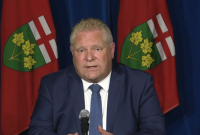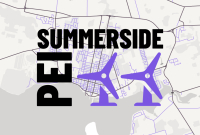Support strong Canadian climate journalism for 2025
Ontario’s back-to-school plan should be more cautious than proposals from the province’s pediatric hospitals, the Elementary Teachers’ Federation of Ontario said, a day after the medical experts called for classrooms to stay open barring catastrophe.
“Schools have been shown to be sources of transmission, and ETFO is very concerned that pediatricians and other experts are not advocating for student masking at all levels,” union president Sam Hammond said, noting that relaxed masking rules had led to school outbreaks elsewhere.
In the United States, both the American Academy of Pediatrics and the Centers for Disease Control and Prevention have recommended unvaccinated students be required to wear masks in schools. No COVID-19 vaccine has yet been approved for children younger than 12.
The question of school safety has been a contentious one in Ontario, where students, parents and teachers are still waiting to hear from Education Minister Stephen Lecce on the COVID-19 measures that will apply to the return to school, which he has said will be forthcoming in the coming weeks.
ETFO, which represents around 83,000 elementary teachers and other education workers, said the spread of the more contagious Delta variant and the absence of vaccines for elementary students signal the need for other measures so reopened schools don’t cause a spike in infections.
“Overall risks would be reduced across the public school system if the government would implement key measures that include access to paid sick days, improving ventilation and reducing class sizes,” Hammond said.
The report from the Science Advisory Table and children’s hospitals across Ontario advised the government earlier this week that contact tracing and low-barrier testing should act as an early warning system when risks are judged to be low.
It said in such conditions, students should be allowed, but not required, to wear masks, and not be required to physically distance or learn in cohorts, the practice of splitting into smaller groups that have limited contact with other students to help contain any outbreaks.
In moderate and high-risk scenarios, it suggested cohorting and masking for younger students without the need for physical distancing, and for masking with or without physical distancing and without cohorting for middle and high school students.
ETFO’s Hammond said it wasn’t clear if safety protocols would be relaxed slowly enough in the low-risk scenario to make sure students aren’t “constantly pivoting to online learning due to self-isolation requirements and lockdowns.”
Morgan Sharp / Local Journalism Initiative / Canada’s National Observer










Comments